2024 Chevrolet Blazer EV RS eAWD First Drive: Crowd pleaser
OK, let’s get this out of the way: Yes, the Blazer name was resurrected for a people-mover and not for a brawny 4×4. The Mustang Mach-E should have been called the Maverick, and the Maverick should have been called Courier, or, I don’t know, something else. That ship has left the station, the train has sailed, etc. Now, the Blazer name will be applied to an electric vehicle that will be sold alongside the internal-combustion Blazer, and the two will have nothing in common besides a name.
When Chevrolet invited us to Del Mar, California, to experience the Blazer EV ourselves, we were already over the confusing naming. We just wanted to get behind the wheel.

The 2024 Blazer might not be the brand’s highest volume EV in the coming years—that crown will surely go to the smaller, cheaper Equinox EV—but the Blazer EV will still be a milestone. Chevrolet will be the first automaker to build an EV that offers front-wheel drive (FWD), all-wheel drive (AWD), and rear-wheel drive (RWD) in the same vehicle, a bevy of options that highlights the flexibility of GM’s Ultium EV architecture.
The entry-level LT will use an 85-kWh battery for the eAWD version that packs 288 hp and 333 lb-ft of torque. An upcoming FWD version, that will be available later in 2024, will use the same battery pack. The range for the 288-hp eAWD powertrain is an impressive 279 miles. The sportier RS models will be available with the same AWD powertrain and an 85-kWh battery, or an optional 102-kWh battery that’s paired with an RWD unit that’s good for 340 hp and 325 lb-ft of torque. The EPA-certified range for the larger battery and RWD is 324 miles, besting many vehicles in its class.
Finally, an SS trim will feature a performance AWD powertrain with an output of 557 hp and 648 lb-ft of torque using the same 340-hp rear-drive unit and the 102-kWh battery that’s optional in the RS. We’ll have to wait to experience that version.
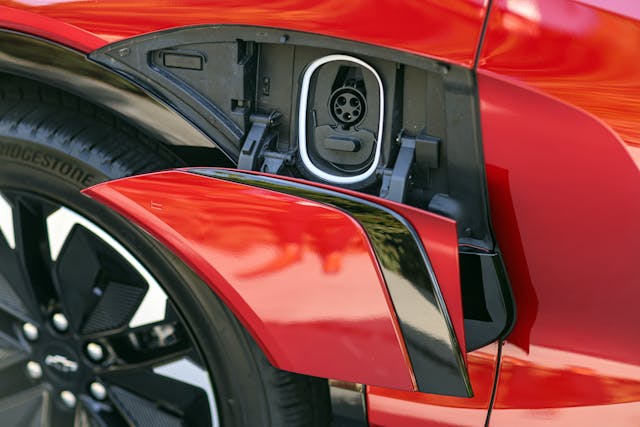
We only spent about half an hour in the more powerful RWD version and it is certainly more fun, with brisk acceleration up to about 45 mph or so before the strong surge of power levels off. Like other EVs we’ve tested, the performance exceeded our expectations given the advertised power level: Unlike an internal-combustion car, there’s no transmission-sapping power, and the torque curve is much flatter. We spent the bulk of our time in an eAWD RS model. While not as powerful, it still offered ample, sure-footed acceleration. Chevy claims 0-to-60-mph runs take a brisk 6.0 seconds.
Specs: 2024 Chevrolet Blazer EV RS eAWD
Price: $53,195 (base), $60,210 (as-tested)
Powertrain: Permanent magnet bar-wound motor and no magnet induction motor eAWD 85kWh battery
Horsepower: 288
Torque: 333 lb-ft
Layout: All-wheel-drive, four-door, five-passenger crossover
Weight: 5300 pounds
EPA-rated fuel economy (equivalent): 103/88/96 e-mpg city/hwy/combined
0–60 mph: 6.0 seconds
Competitors: Tesla Model Y, Ford Mustang Mach-E, Hyundai Ioniq 5
The overall throttle mapping is almost exactly what a driver would expect from a modern ICE car, except for the much-improved low-end performance. Throttle response is lively when asking for passing power, although the Blazer EV will coast when in its default driving mode, a behavior that keeps the vehicle from feeling jerky. One-pedal mode is available with a tap of a dash button. Otherwise, letting off the throttle won’t cause abrupt regenerative braking. Even using the paddle mounted on the back of the steering wheel on the left side that increases regenerative braking won’t upset the car—braking is applied very smoothly.

Despite the Blazer’s EV’s wide track and sleek roofline, forward and front side visibility is quite good. The rather short back window does make it difficult for taller drivers to adjust the rearview mirror to provide an optimal view, but all Blazer EVs are equipped with a rear camera mirror, which projects a clear, wide view onto the center screen, no matter your rear sightline. The camera is positioned below the rear window, so it does make vehicles look large when they creep up close at a stoplight.
Chevrolet’s controversial decision to ditch Apple CarPlay and Android Auto has caused fervent fans of both interfaces to light up automotive forums and decry the decision, writing off even considering a GM EV. There were a few on our media staff who were questioning the move and were very disappointed in the decision; others, your author included, weren’t married to either interface.

No matter which powertrain or trim level, the interior of every Blazer EV uses a 17.7-inch touchscreen that handles most of the vehicle’s controls. There are still physical dials for HVAC controls and volume. Chevrolet developed its interface with Google to help drivers during the transition from an ICE vehicle to an EV by integrating its navigation system with the vehicles’ charge state and an ever-expanding network of chargers. Ask the vehicle to plot a drive to a destination, and Google Maps will display an optimized route that includes where to charge, and for how long, taking the vehicle’s current state of charge, traffic, distance, and elevation into account. It will also inform the driver of how much charge will be left upon arrival.
After a quick setup of our phone, the application sent us off on our drive route with waypoints and we were free to use our phone to stream music to the car. If you use Spotify or another popular music streaming service, there’s likely already an app built-in for that, but whatever app you choose to play music or podcasts on your phone can still be broadcast to the car using Bluetooth. The caveat is that Google Maps + Voice is free for eight years; after that, it will likely be put behind a paywall. Eight years ago, both Apple Carplay and Android Auto were in their infancy, so who’s to say what in-car navigation will look like that far in the future?

Behind the wheel, the Blazer EV AWD feels solid and planted thanks to the wide track, while the long wheelbase helps isolate occupants from jolts. Like every mainstream consumer EV we’ve driven, the low center of gravity helps the Blazer EV from having much body roll. Through curvy stretches of road with changing camber, the Blazer EV performed flawlessly. Neither we nor our co-driver pushed the vehicle anywhere close to its limits, but it seemed more than capable of handling a bit of spirited driving.
Through it all, the Blazer EV was comfortable and very quiet. We experienced a particularly windy day and saw trees swaying and bushes near the road being lashed by gusts, but the Blazer EV wasn’t pushed around and wind noise was nonexistent. The nearly silent nature of EVs is compensated by an electronic whirring at speeds below 25 mph or so to help alert pedestrians of the vehicle’s presence; above that speed, the noise fades away.
Thanks to the Blazer’s wide stance and lack of a transmission or driveshaft tunnel, the interior is spacious. The tall, narrow center console leaves plenty of legroom and has deep bins for storage along with twin cupholders and a wireless charging pad that keeps your phone handy. The forward storage bin features a roll-top that hides USB-C ports for charging. With a 122-inch wheelbase that puts the wheels at the corners of the vehicle, Chevy was able to offer plenty of room inside for passengers, and rear-seat occupants will enjoy ample legroom. The Blazer EV’s cargo area also puts it at the top of its class, besting that of the Model Y, Mach-E, and Ioniq 5.
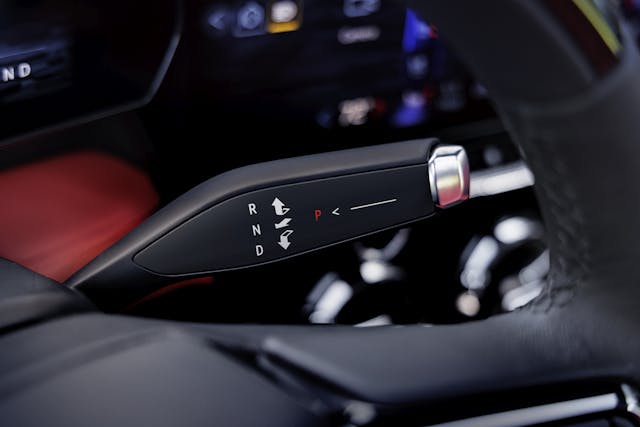
Operating the Blazer EV requires you to interact with both old and new technologies. A column-mounted shifter operates a bit like a traditional unit from back in the days of the Powerglide. The mounting location worked fine then, and it works just fine now, keeping the console free for more frequently used items. Pulling back and down puts the Blazer in drive, and pulling back and up puts it in reverse. The new lever is sleek and simple, not at all clunky like those old shifters, and park is activated by pressing a button at the end of the shifter.
Another big change is the absence of a “Start” button. Once an occupant is sitting in the driver’s seat and the key is detected, the vehicle comes to life as soon as the brake pedal is depressed. Just shift into gear, and you’re off.
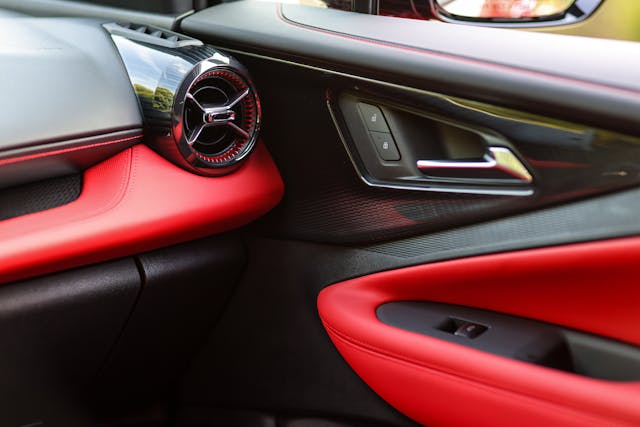
The Blazer’s aesthetics clearly aim for sporty, and the proportions and low center of gravity back that up. Inside, everything from the style of the vents to the optional contrasting stitching and black-and-red suede seats gives athletic vibes. Thankfully, the ride is more compliant and comfy than track-tuned and punishing. The seats are also designed with long-distance comfort in mind. We anticipate that the SS will firm things up and bring more seat bolstering, but for the wide swath of the market targeted by the non-SS trims and drivetrains, the look and performance seem spot-on.
Chevy has incorporated a lot of the lessons it has learned over the Bolt’s production life to make a capable EV that tackles some of the biggest sellers in the space head-on. Thanks to the platform’s powertrain flexibility, the Blazer EV should be able to cover a big swath of the midsize crossover market. Anyone coming from an ICE crossover in the 300-hp range will be able to get in and go without having to overcome any learning curve, and they’ll enjoy solid acceleration and plenty of range for daily driving, as well as help finding a charger when longer road trips are in order.
2024 Chevrolet Blazer EV RS eAWD
Highs: Stylish, roomy, and quiet, with a comfortable ride.
Lows: CarPlay and Android Auto fans will have to be dragged to the dealership kicking and screaming, even though the Google user interface is a viable alternative.
Sum-up: The 2024 Blazer EV should make an easy transition for first-time EV buyers.
***
Check out the Hagerty Media homepage so you don’t miss a single story, or better yet, bookmark it. To get our best stories delivered right to your inbox, subscribe to our newsletters.

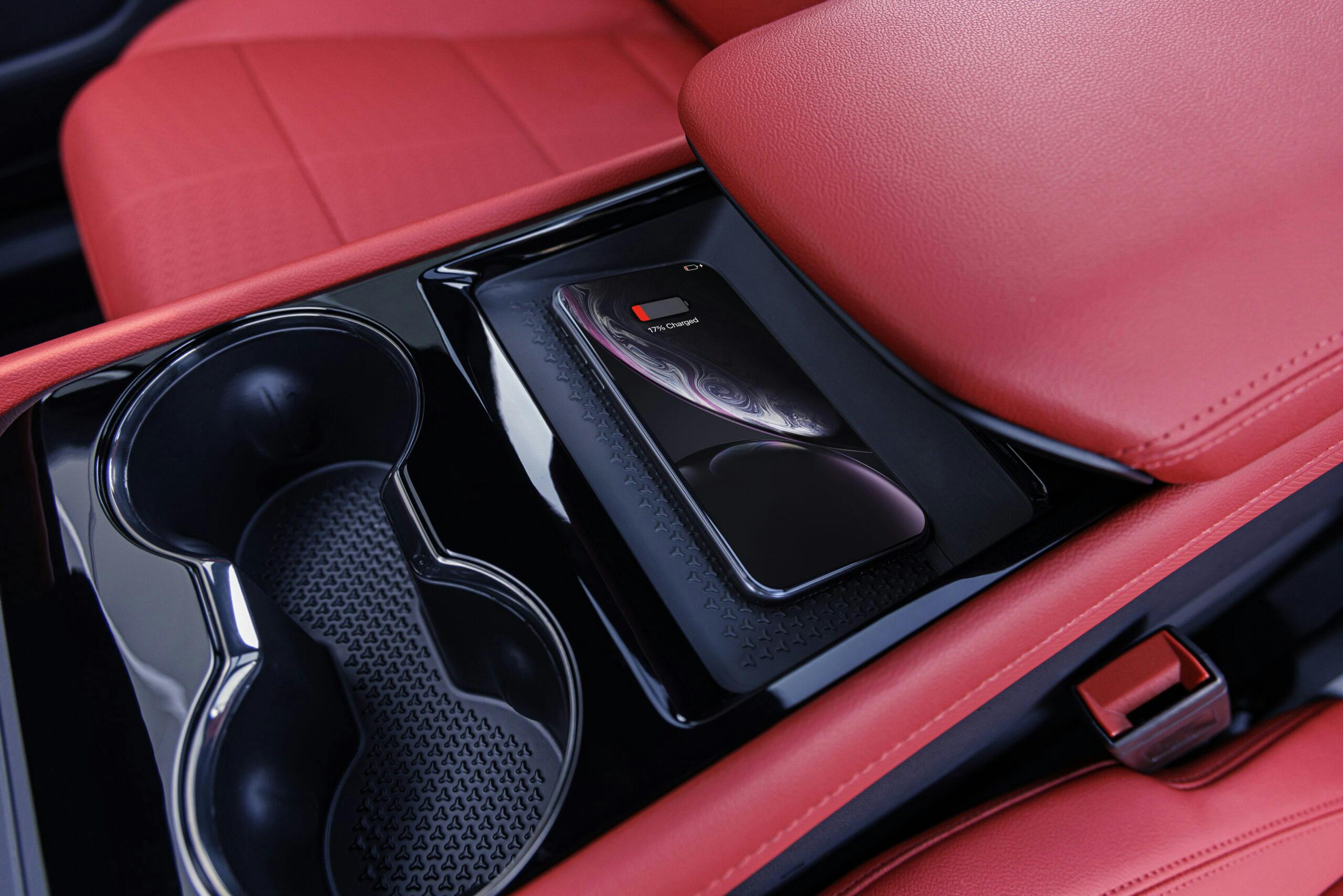
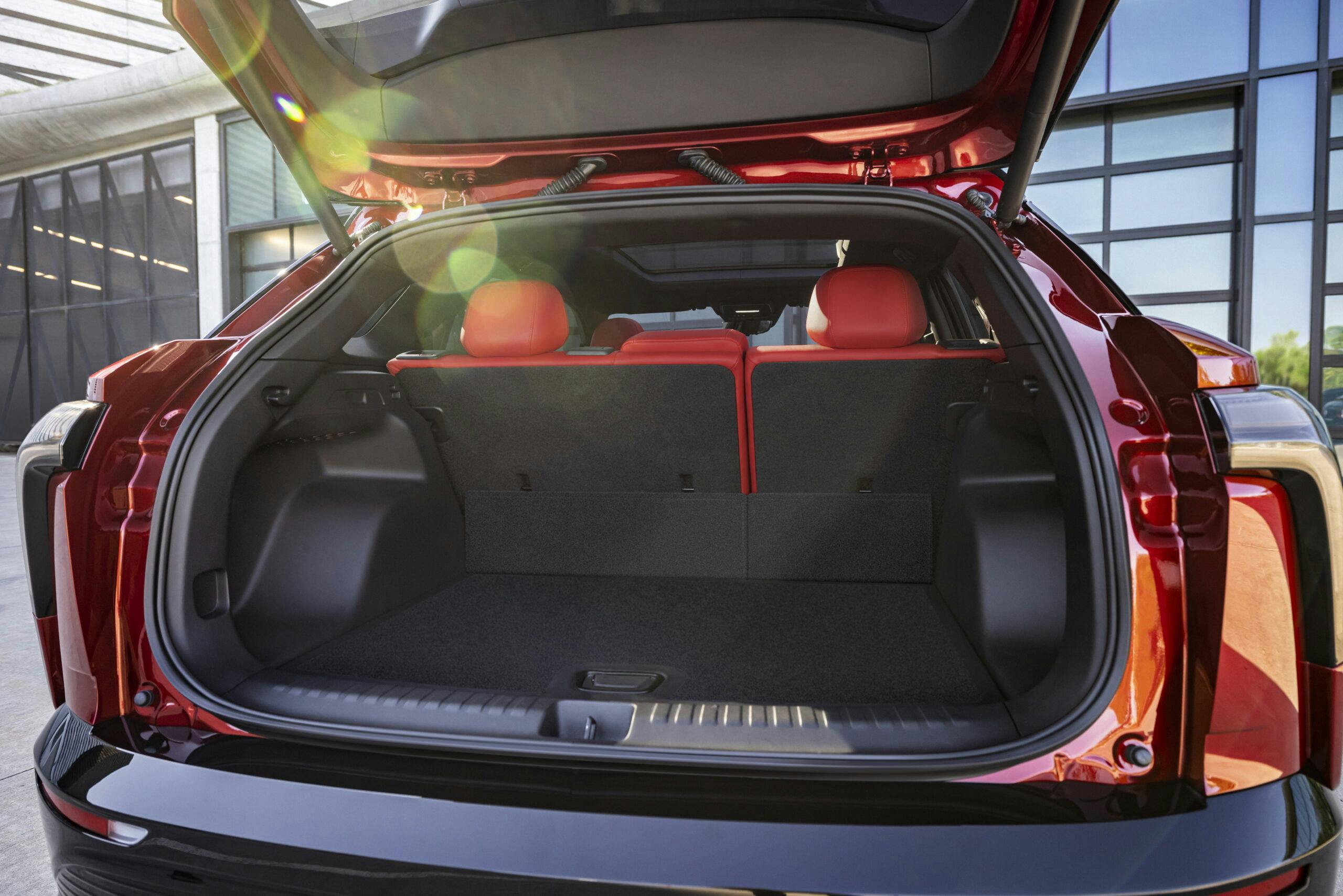

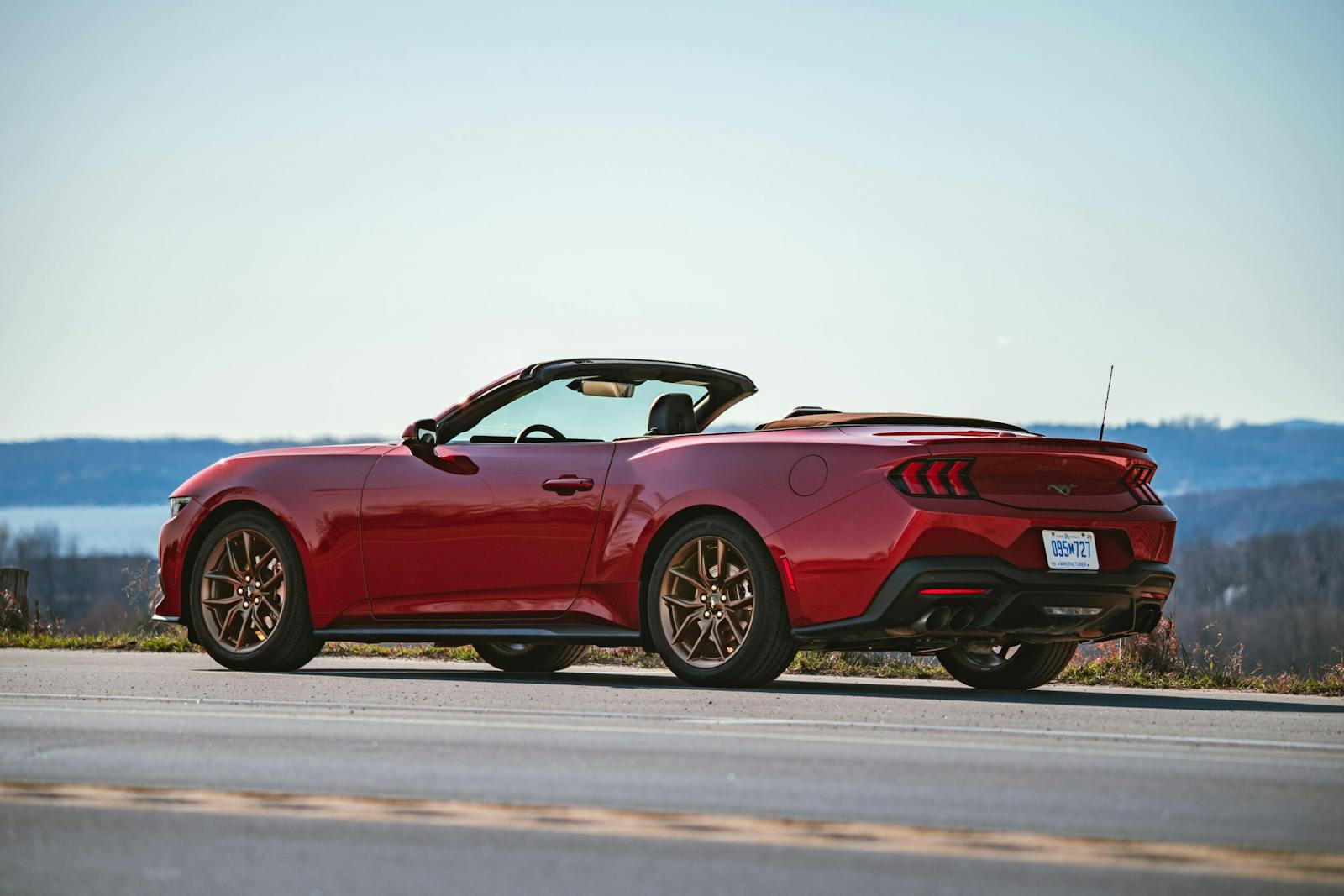
We got to play with one of these whe we bought my son a Blazer RS ICE model.
It is a nice vehicle and if you want a EV model it would be worth considering. But for now we stuck to the ICE model out of practicality and price for our needs.
GM has been smart to build the EV models but keep the ICE along side them. While they do not market this they plan to keep ICE around as long as legally possible.
EV will have its place but it needs to be accepted at the consumer level not the Federal or CARB level.
I can see the EPA backing off at some point on their future dates but for those in CARB regulated states may have some issues buying new ICE models. This is why in election year this topic needs to be brought up.
Nice looking for a ‘potato’ car. There’s only so much you can do with that envelope kudos to GM. Now if you could do something about the Silverado front end….
Decent looking. Not interested in this.
Well, it looks great kinda like the cadi EV. Base price is a joke, its a chevy. Prices like that it will flop like the ford lightning
Living in the SW with considerable distances between points of interest…. Well I am not convinced about moving to EV. Too many sad stories from EV owners about lack to support/infrastructure to keep their EV running. Why isn’t management focusing on cleaner fuel? EV is going to take a Looooong time to impact the environment. Meanwhile we have non-computer traffic signals that make motorist stop every block and wait time looking a red light with no cross traffic and coal/petro power plants spewing out hydrocarbons like crazy while the customer is expected to spent big bucks on vehicles that studies show aren’t dependable and have lousy resale values. Nice that auto writers are excited, but 3 factors concerning many motorist: Value, reliability, availability of charging stations with no waiting.
“Ummm Grandma, could we borrow your Grand Marquis for the weekend? We have a soccer tournament 5 hours away and don’t want to take our EV…”
Looks good, but not for $60K. It will need a new battery pack at 100K miles.
The Canadian federal and our Provincial (state) governments have set 2035 as the target for ZERO internal combustion engine powered passenger cars to be sold.
The province I live in has copious hydro dams for electric power and has been selling excess power for a long time. Until last year, when due to the changing climate there was far less rainfall to fill the rivers to drive the generating plants, and about 18% of the power needed had to be imported. We also suffered through the worst wildfire season, EVER.
Begs the question of where this power comes from and how is it produced? Fossil fuel generating plants maybe…
Seems that governments can’t see much past the next election cycle.
We have reached a point in the evolution of the ICE that they are very ultra low emmisions vehicles. Perhaps the powers that be should be focussed on getting the older, higher polluting ICE powered vehicles out of use. Something along the lines of what Japan has done with no vehicle older than 15 years allowed. Makes us look a little unenlightened clamoring after JDM vehicles.
Our government provided incentives for the purchase of ULEV emmision standard vehicles when we took advantage of that and happily replaced a 15 year old, on it’s last legs Explorer with a brand new Honda CRV. That program ended not long after that and hasn’t been revived since.
Recently the owner of a Hyundai EV was unfortunate enough to have the battery pack make contact with the ground, not sure how that happened. However the upshot is that the battery was deemed “unsafe due to damage” and the replacement cost was more than the 2022 vehicle cost. For just the battery.
Our government mandated auto insurance agency promptly wrote off the car. So what happens to the battery? Unclear at this time. I worked at a Hyundai dealership and an auto body shop and most technicians weren’t wanting to stick their brain buckets anywhere near the drivetrain of an EV. There’s some catching up to do.
I’m not saying that the EV is a bad choice. It just shouldn’t be the only choice.
In closing the Chev wouldn’t be my choice. I swore off GM after being treated very poorly by them 20 years ago. We’ve purchased 4 new vehicles in that 20 years, and no $$ for GM from us.
As long as Mary Barra is in charge, the vehicles being churned out will be milqetoast competition to the other domestic, Japanese and Koreans. And most likely made in Mexico where our US and Canadian taxpayers dollars went after 2008 & 2009.